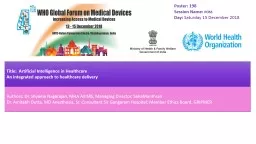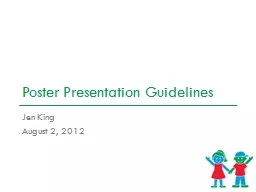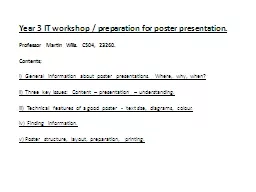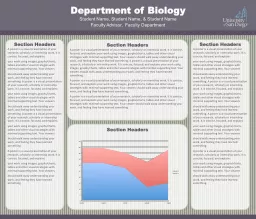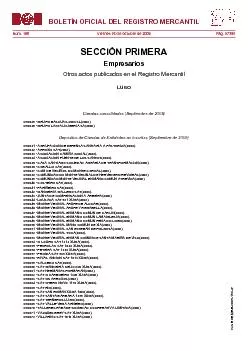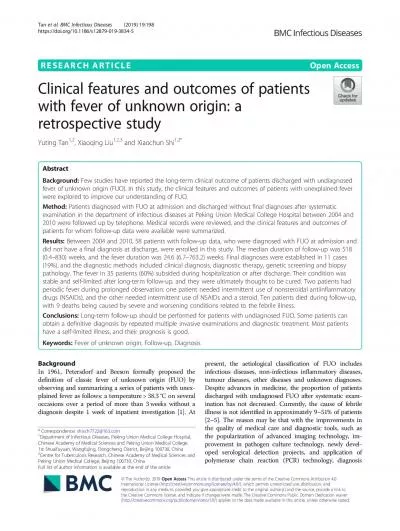PPT-Poster: 198 Session Name:
Author : olivia-moreira | Published Date : 2020-04-04
POS5 Day Saturday 15 December 2018 Title Artificial Intelligence in Healthcare An integrated approach to healthcare delivery Authors Dr Shyama Nagarajan MHA
Presentation Embed Code
Download Presentation
Download Presentation The PPT/PDF document " Poster: 198 Session Name: " is the property of its rightful owner. Permission is granted to download and print the materials on this website for personal, non-commercial use only, and to display it on your personal computer provided you do not modify the materials and that you retain all copyright notices contained in the materials. By downloading content from our website, you accept the terms of this agreement.
Poster: 198 Session Name: : Transcript
Download Rules Of Document
" Poster: 198 Session Name: "The content belongs to its owner. You may download and print it for personal use, without modification, and keep all copyright notices. By downloading, you agree to these terms.
Related Documents

